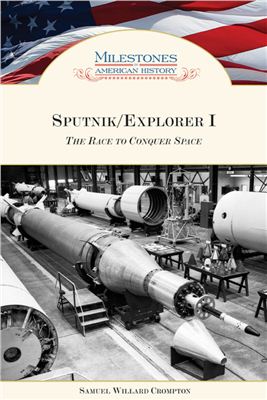New York. Chelsea House Publishers? 2007. - 113 p.
The cold war served as the backdrop for the competition to find out which superpower-the United States or the Soviet Union-could reach outer space first. On October 4, 1957, the Soviet Union successfully launched the first artificial satellite, Sputnik I. Weighing 183 pounds (83 kg), Sputnik I was the size of a basketball, much larger than the United States' 3.5-pound (1.6-kg) Vanguard TV-
3. The Soviets' success caught many Americans off guard, and the U.S. Department of Defense redoubled its efforts by approving funding for an alteative satellite project known as Explorer. However, before either U.S. satellite was ready, the Soviets launched Sputnik II, which carried the first living animal-a dog named Laika-into orbit on November
3. Despite the failure of Vanguard TV-3, which exploded on the launchpad on December 6, the United States persevered. On January 31, 1958, Explorer I became the first U.S. satellite to orbit Earth, and the space race had officially begun. .
The cold war served as the backdrop for the competition to find out which superpower-the United States or the Soviet Union-could reach outer space first. On October 4, 1957, the Soviet Union successfully launched the first artificial satellite, Sputnik I. Weighing 183 pounds (83 kg), Sputnik I was the size of a basketball, much larger than the United States' 3.5-pound (1.6-kg) Vanguard TV-
3. The Soviets' success caught many Americans off guard, and the U.S. Department of Defense redoubled its efforts by approving funding for an alteative satellite project known as Explorer. However, before either U.S. satellite was ready, the Soviets launched Sputnik II, which carried the first living animal-a dog named Laika-into orbit on November
3. Despite the failure of Vanguard TV-3, which exploded on the launchpad on December 6, the United States persevered. On January 31, 1958, Explorer I became the first U.S. satellite to orbit Earth, and the space race had officially begun. .

